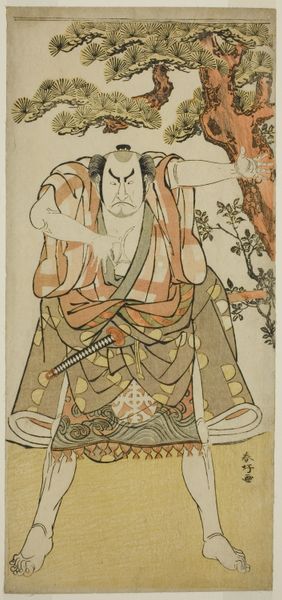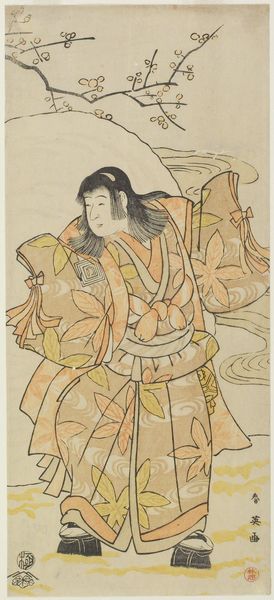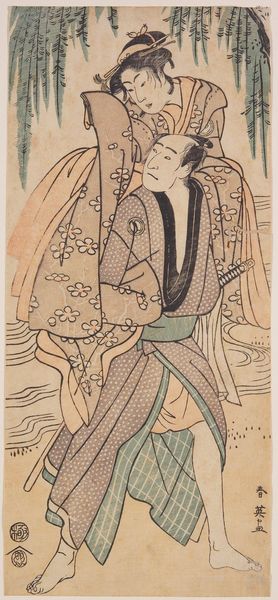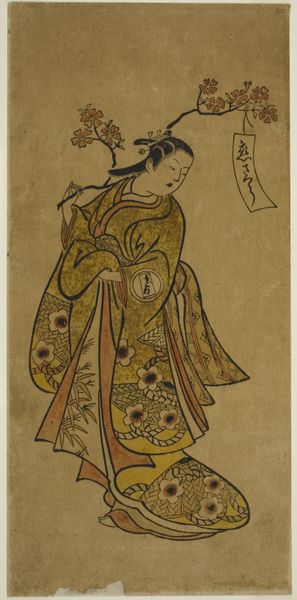
Young couple as Kanzan and Jittoku c. early 19th century
0:00
0:00
print, ink
#
narrative-art
#
ink painting
# print
#
asian-art
#
ukiyo-e
#
ink
Copyright: Public Domain
Editor: This woodblock print from the early 19th century is by Utagawa Toyokuni I, and it's called "Young couple as Kanzan and Jittoku." I'm really drawn to the intimacy of the scene and the subdued palette. What story do you think this print tells, especially considering the figures represented? Curator: This print is a fascinating example of Utagawa Toyokuni I engaging with popular culture while referencing established artistic and religious traditions. The Kanzan and Jittoku you mentioned were legendary eccentric Zen monks known for their unconventional wisdom. Here, they're depicted as a young couple, which speaks volumes about the changing social values and the increasing importance of the merchant class who would have consumed these prints. Editor: So, by depicting a young couple as these famous monks, is the artist commenting on societal expectations? Curator: Precisely. Ukiyo-e prints, like this one, were often used to depict contemporary life, including the evolving roles of men and women. Transforming religious figures into everyday people allows for a more accessible understanding and integration of these ancient teachings into modern life. Look at how the woman, presumably Kanzan, holds what looks like a scroll. And the male figure, who may be Jittoku, carries a broom. What do you make of that imagery? Editor: Well, it gives a really domestic feel, as if wisdom and enlightenment can be found in daily life and relationships. It's interesting how these characters, originally known for their detachment, are brought into a context of romantic companionship. Curator: That contrast is exactly where the social commentary lies. The print asks us to reconsider where we find meaning and spiritual significance. And how the consumption of prints like this became part of shaping social norms around relationships and morality in a rapidly changing Edo society. Editor: That really changes how I see the piece. It's not just a snapshot, but an active participant in cultural dialogue. Thanks! Curator: Indeed. Seeing art in its historical and social context always adds another layer of appreciation.
Comments
No comments
Be the first to comment and join the conversation on the ultimate creative platform.













